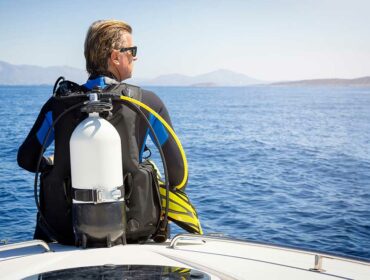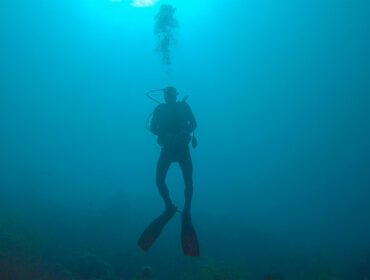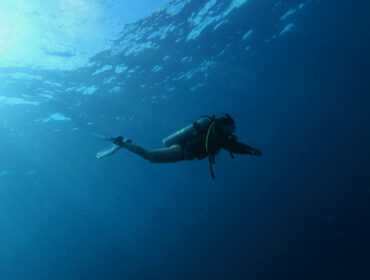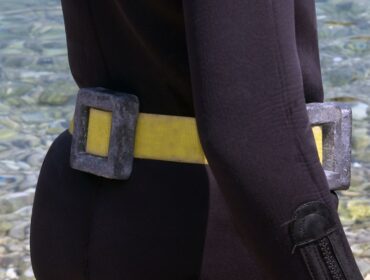Weights are one of the most essential components of SCUBA gear but are often the most tricky to assign. So many factors go into calculating a diver’s proper weighting: water salinity, wetsuit thickness, and body mass, just to name a few. If you dive consistently in the same water with the same amount of exposure protection, it will probably be easy for you to determine your proper weight and remember it. But even the slightest change in any of the factors will result in a change in your weighting, so be sure to pay attention to how your weight feels on every dive to ensure you are not over- or under-weighted. There are different weight styles to accommodate comfort, so choose the type that best suits you.
Block Weights and Belts
Block weights are the most simple form of SCUBA weights. They are made of lead and can be coated in vinyl or plastic to lessen the impact on the weights and the surfaces they fall on, like boat decks. A belt made of heavy-duty nylon webbing is threaded through slits on each weight and is secured with a stainless steel or plastic buckle. The belt is placed on the diver above the hip bones, which is fitted snugly, and the weights are adjusted evenly on the diver’s frame for underwater balance. Block weights can also be added to the tank strap for extra weighting. Many divers enjoy making their own block weights, and all components of a block weight system can be purchased individually for assembly at home.
Soft Weights and Belts
Soft weight pouches are like the bean bags you played with as a kid, just a touch heavier. Lead pellets, or shot, are sewn into a durable fabric pouch and then placed in a pocketed belt that is usually constructed from heavy-duty materials, such as nylon webbing or neoprene. The advantage of lead shot weights is their ability to conform to your body shape instead of your body complying with the shape of hard block weights, which can result in bruises and abrasions. If you need to drop weight, soft weights give you the option of only dropping the weight you need to lose rather than the whole belt. The pockets will typically have a Velcro or zipper closure so your weights are secure but easy to access in an emergency.
Free Weights
In addition to these two main types of weighting systems, other types of weights will help you achieve a higher degree of buoyancy, such as tank weights, ankle weights, trim weights, and additional single-weight pouches that attach to your BCD that can be ditched quickly in an emergency. These weights will not generally be introduced to new divers immediately, as it is more essential to attain buoyancy through proper technique than by adding weight.




